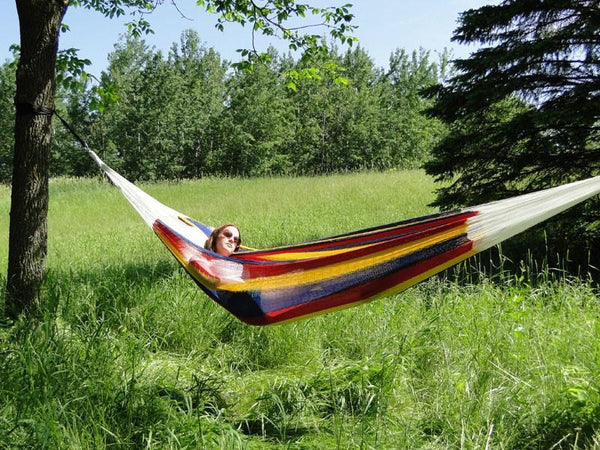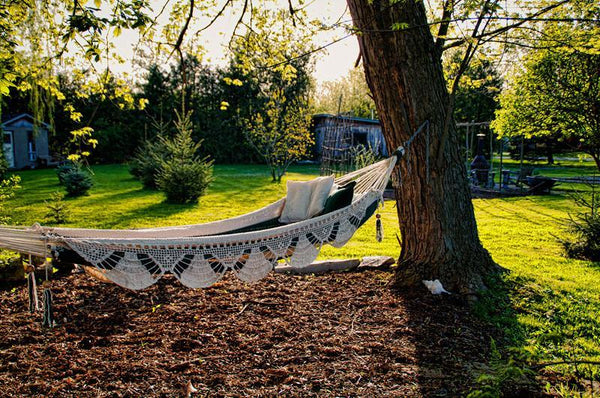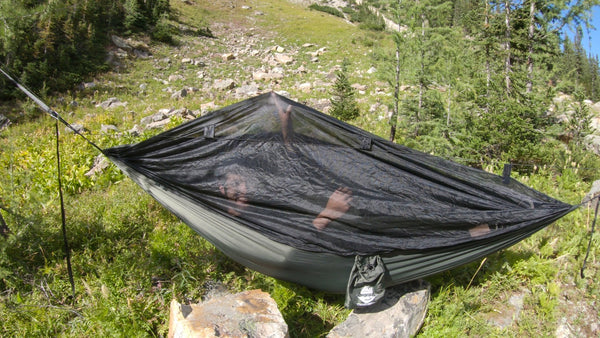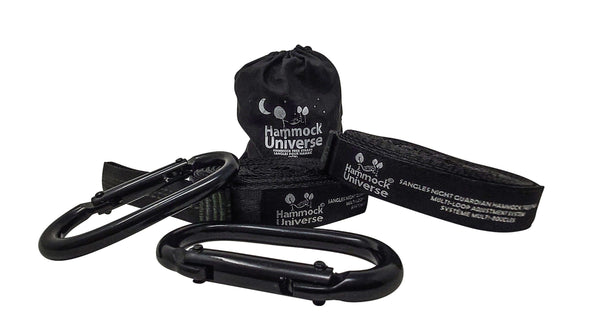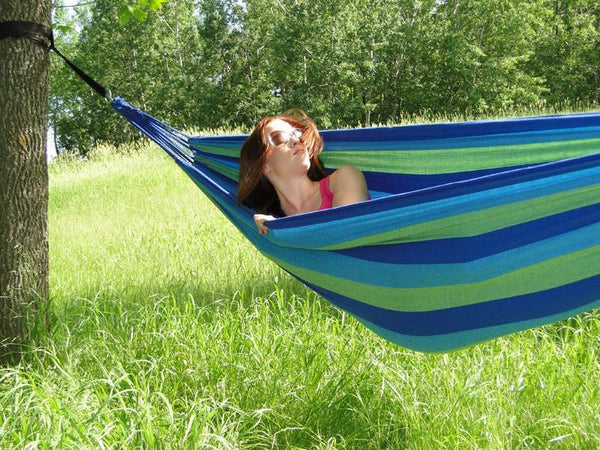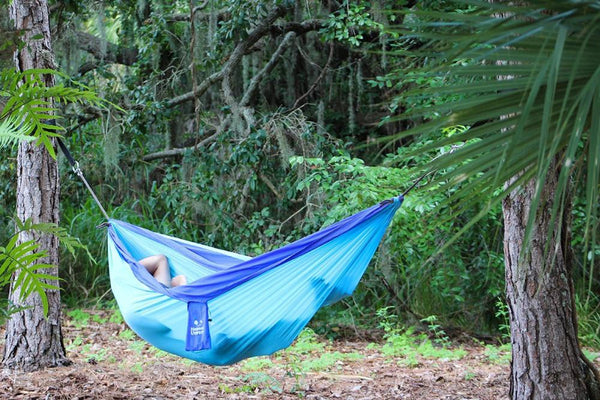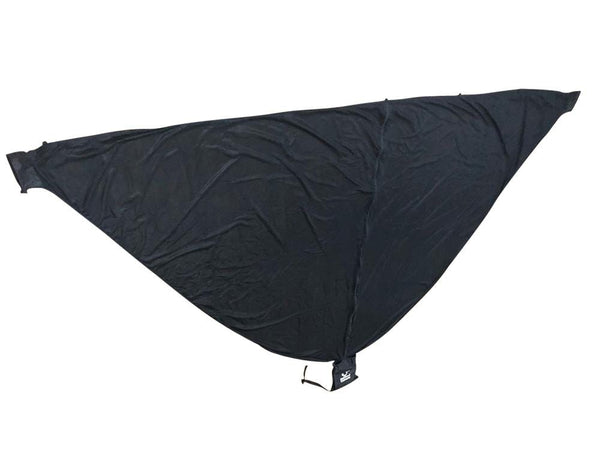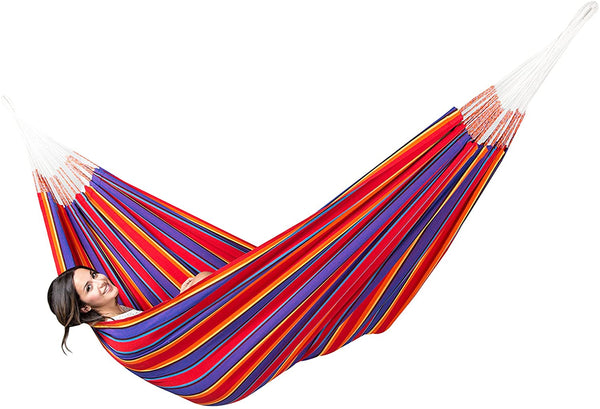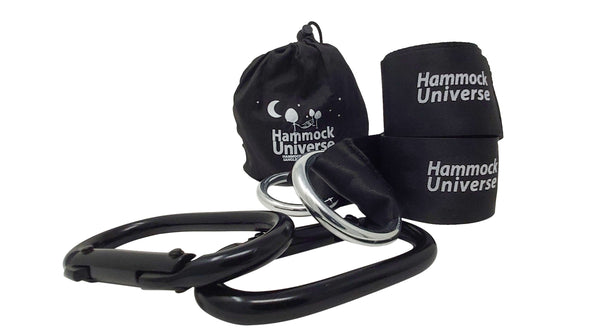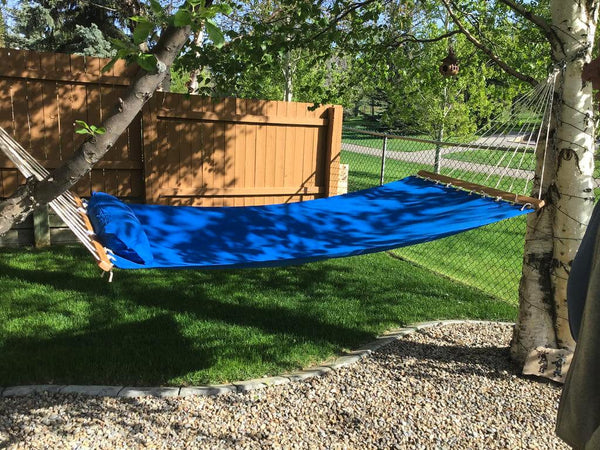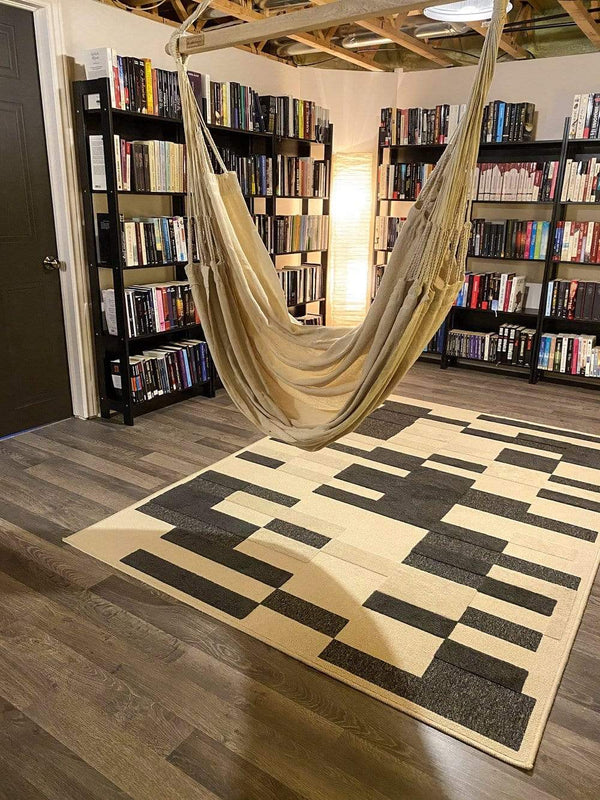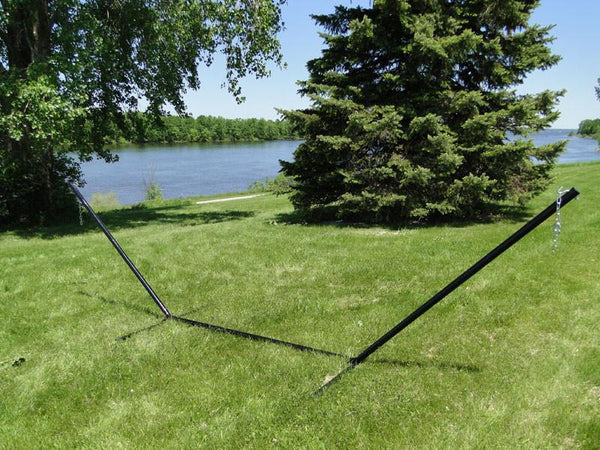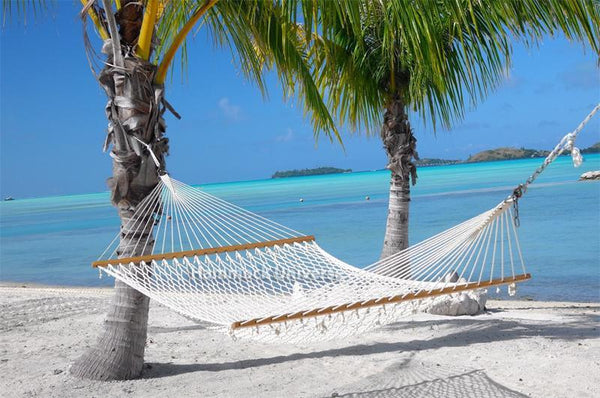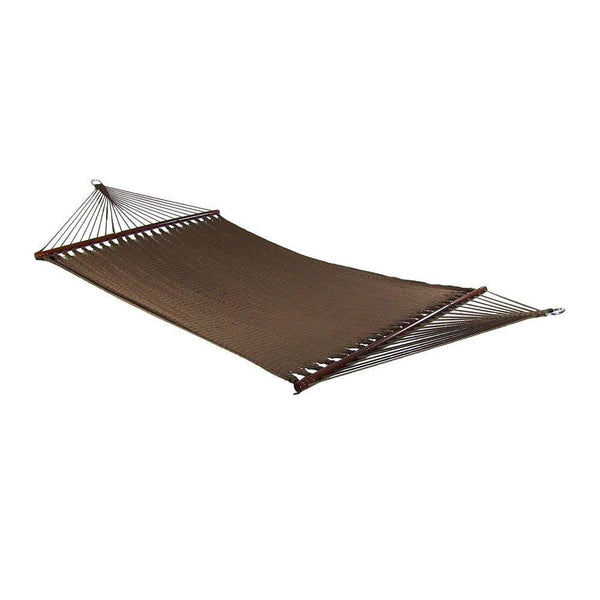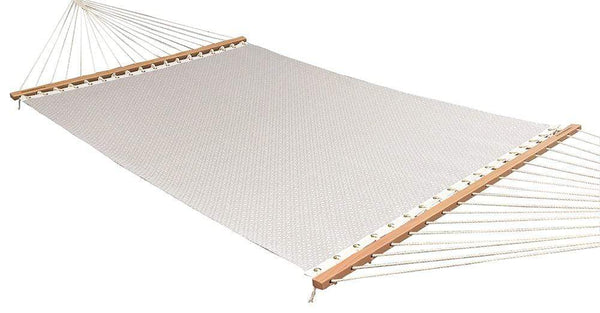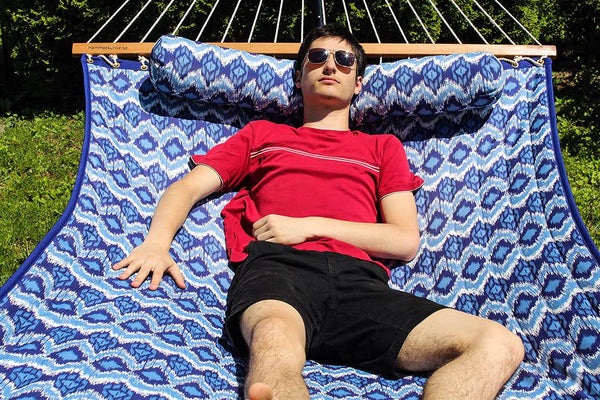FREE SHIPPING on most orders $25+ HAMMOCK BUYING GUIDE
Menu
-
-
Hammocks
-
Hammock Stands
-
Hammocks with Stands
-
Hanging Hammock Chairs
- View all Hammock Chairs
- Brazilian Style Hammock Chairs
- Colombian Hammock Chairs
- Mayan Hammock Chairs
- Mayan Hammock Chairs Deluxe
- Universal Hammock Chair Stand
- U Hammock Chair Stand
- Brazilian Hammock Chair with Universal Chair Stand
- Colombian Hammock Chair with Universal Chair Stand
- Mayan Hammock Chair with Universal Chair Stand
- Mayan Hammock Chair Deluxe with Universal Stand
-
Accessories
- Gift Cards
- Tools and Guides
- Bargain Bin
-
- 1-800-207-4761
- Login

FREE SHIPPING on most orders $25+ HAMMOCK BUYING GUIDE
The History of the Hammock - How This Beloved Product Came to Be
August 19, 2019 4 min read
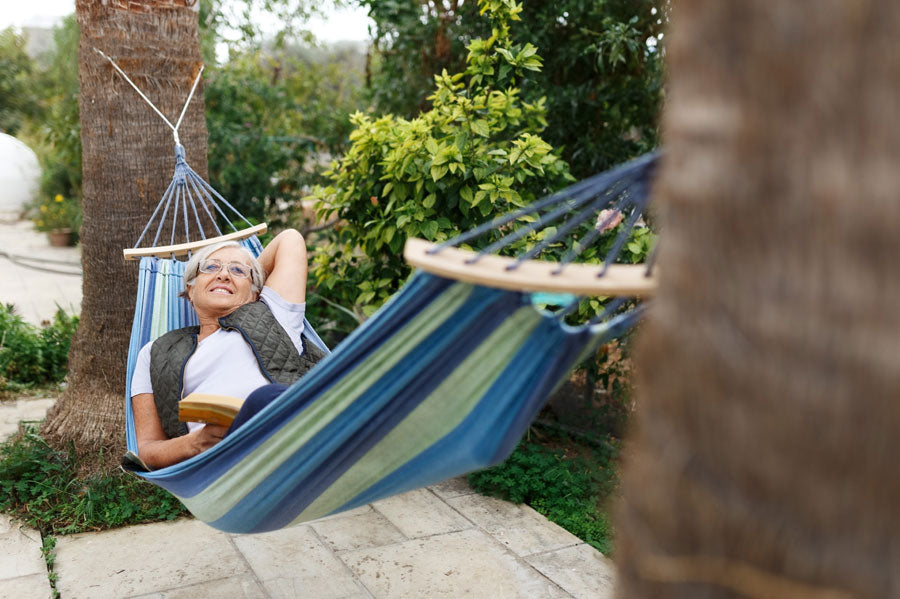
How the Hammock Became Popular in North America
On a hot summer day when you’re out in the backyard lounging in your cozy hammock, have you ever thought about the origins of this amazing invention and how it came to be?
No? Just us?
Well regardless, the hammock has a pretty interesting backstory.
While here in North America, the hammock is considered a more modern invention that came to us from Europe, down in the Caribbean along with Central and South American countries like Mexico, Nicaragua, and Brazil, hammock sleeping has been a way of life for hundreds of years.
So then how did it go from the jungles of South and Central America and beaches of the Caribbean to backyards all around the world?
Let’s go all the way back to the beginning.
Southern Origins
The hammock was first developed for sleeping by the native inhabitants of Central and South America. It was also common in what was formerly known as the West Indies (now known as the Caribbean islands).
But rather than the cozy, colourful fabric options you often see in Brazilian, Nicaraguan, and Mayan hammocks today, these early hammocks were woven out of tree bark. This material was eventually swapped for sisal fibers because it was much more abundant.
Hammocks became an incredibly popular and practical sleeping option because being suspended off the ground provided safety from disease transmission, insect stings, and animal bites during the night.
They then became popularized in Europe by explorer Christopher Columbus, who upon landing in the West Indies in the 1400s, noticed these unique sleeping contraptions and recorded his observations of how “people were sleeping in nets between the trees.”
Columbus was clearly intrigued by the invention, as he brought the hammock idea back with him to Spain where it became immensely popular across Europe, and eventually North America.
How Did Hammocks Get Their Name?
The original hammocks from South/Central America were made from woven bark from the Hamack Tree, which is why indigenous people called them “hamacas” in their native language.
As they were adopted by Europeans, the name eventually evolved into what we now know as the hammock.
Use in Navies Around the World
By the mid-16th century, the English and Spanish navies began using hammocks for sleeping on-deck.
The main reason for this was to not only save space, but also because the hammocks moved in sync with the motion of the ship, reducing the risk of sailors being thrown onto the floor when waters were rough.
But unlike the hammocks originating from South/Central America, the European’s take didn’t exactly have comfort in mind.
The European naval hammock was typically made from heavy canvas and did not have the ventilation that the South and Central American hammocks had.
Even still, for three centuries, sailors in Europe and eventually the United States slept on these hammocks, including during World War I, World War II, the American Civil War, and the Vietnam War.
By the late 19th century, British prisons began replacing beds with hammocks to save space and cut costs. And over in the United States, the hammock was eventually adopted by farmers as an inexpensive sleeping solution, and by wealthy families for leisure.

Image source: NASA
Hammocks in Space
Perhaps the most surprising use of the hammock throughout history is its role during space exploration in the 1960s.
During the Apollo 11 moon landing expedition in 1969, astronauts Neil Armstrong and Buzz Aldrin retreated back to their cabin after exploring the surface of the moon but struggled to fall asleep on the floor and engine cover. It was clear to the National Aeronautics and Space Administration (NASA) that a better sleeping option was needed.
So, by the launch of Apollo 12 in November 1969, NASA had come up with a comfortable, lightweight sleep solution for astronauts: moon hammocks.
Equipped with blankets, hammock insulators, and Velcro attachment pads, these hammocks provided Apollo landing crews with much more comfort, allowing them to get a good night’s rest at last.
Modern Popularity
Nowadays, hammocks are mainly used for leisure and relaxation, and have become especially popular amongst the millennial generation due to their comfort, ease, and portability.
But the modern-day hammock is a far cry from the tree bark and stiff canvas hammocks of days past.
Hammocks have since been modernized with an emphasis on aesthetics and comfort, with more lightweight, portable designs and colourful, stylish fabrics becoming widely available.
Creative Uses for Hammocks
While hammocks are now typically used for relaxing outdoors, they are incredibly versatile and can be used in a number of surprising ways.
Here are a few ways you can put your hammock to good use.
Camping
Hammock camping has become a popular alternative to tents for sleeping outdoors, and for good reason.
Sleeping in a hammock is not only more comfortable than sleeping on the ground but is also so much more practical.
Camping hammocks are incredibly lightweight and can easily fit in any pack without taking up much room.
Another big advantage is that they can be set up anywhere, regardless of elevation or the condition of the ground.
Workout Recovery
When exercising in your home gym, sometimes you need to take a break and recover from a strenuous workout. But rather than retreating to the couch, try setting up a hammock in your workout room where you can relax and allow your muscles to recover.
Guest Bed
Hammocks aren’t only comfortable to sleep in, but can be just as functional, yet much more practical than any other bed. Rather than splurging on a new bed and trying to fit it in your guest room, why not set up a hammock for your guests to sleep in?
With a cozy blanket, some cushions, and sturdy support straps, you can create the ultimate oasis for your guests to spend the night.
Regardless of how you choose to make use of your hammock, there’s no denying they’ve come a long way from the early days of tree bark. So next time you’re getting ready to take a nap outdoors in your hammock, count your blessings that the hammock has evolved into the beloved, comfy, and stylish version you get to enjoy today.
Safety First!
When using a hammock*, safety is paramount. Please make sure to follow these important guidelines when purchasing, installing and using a hammock
*(includes Hammock, Hammock Chair, Hammock Stand and Hammock Accessories)
Safety First!
When using a hammock*, safety is paramount. Please make sure to follow these important guidelines when purchasing, installing and using a hammock
*(includes Hammock, Hammock Chair, Hammock Stand and Hammock Accessories)
Related Products
Want to relax?
Join for exclusive content and promotions we only give to our email list!
